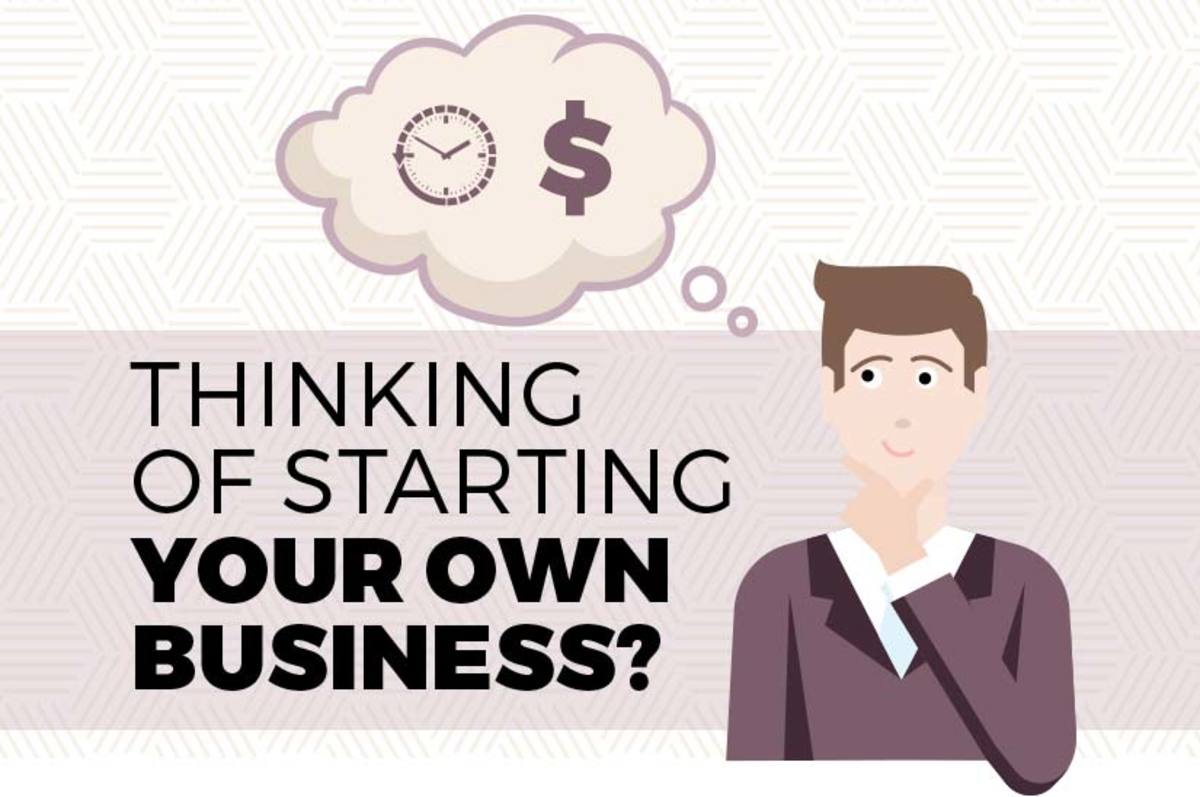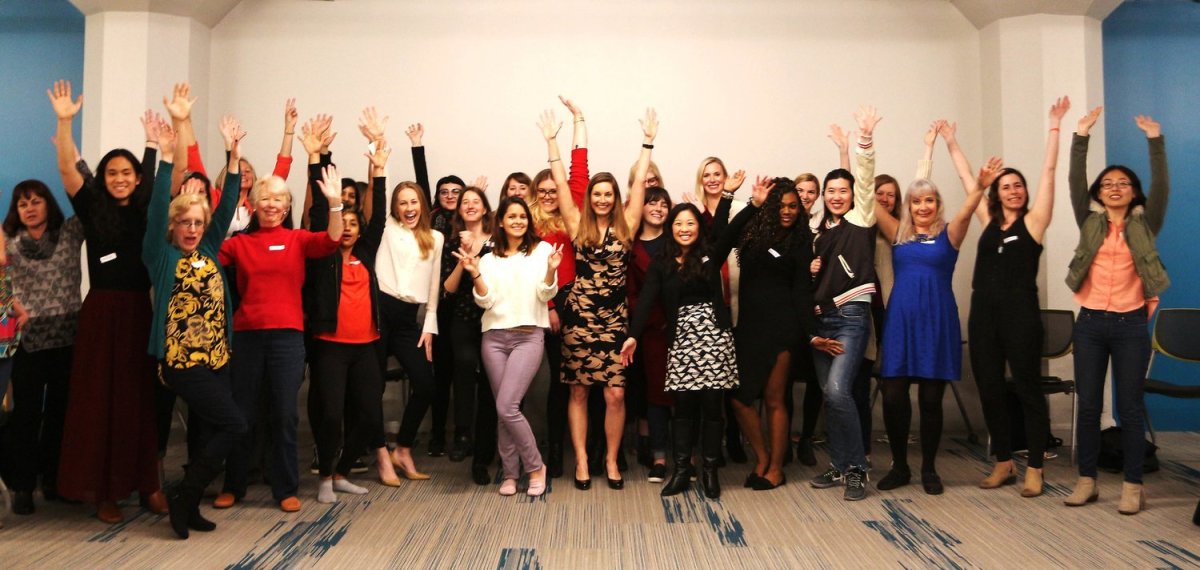Personal Mastery: Creating Success In Life and Work
Skills and Framework for Creating Business and Career Success
"People with a high level of personal mastery are able to consistently realize the results that matter most deeply to them--in effect, they approach their life as an artist would approach a work of art. The do that by becoming committed to their own lifelong learning." — Peter Senge, The Fifth Discipline
“The starting point to figuring out the future is figuring out yourself.”
So says, Nuala Beck, guru of The New Economy. Beck suggests one reason people fail at re-training or entrepreneurial efforts is that they take on difficult challenges without knowing clearly what they want.
She cautions against making change without knowing where you want to end up, and why. “Define yourself first,” she urges.
Before you can successfully shift to a new career or start a successful business, you’d do best to align your efforts with your deepest longings and your highest aspirations. “Combine your love or hobby with a practical skill,” says Beck.
Doing What You Love
Many people, though, find this advice easier said than done.
It’s not just that they don’t know what they want or what they love, some purposefully shy away from work they love. They think, as did the father of one of my students, that work should be struggle. Work, for him was meant to be painful. Working at what you love was, he claimed, “Silly, just playing around.” His son had hear the message, loud and clear.
The son had tried numerous jobs, but could not stay with them. When he came to my Personal Mastery class he was depressed, despairing he’d never find satisfying work.
When asked to describe what he loved doing he said, “Just skiing.”
When asked, “Why not get a job in the ski business?” he replied, “Because skiing is playing. It’s not real work.” Like father like son.
This student had to learn two important lessons:
First, what he wanted to do was quite different than what he felt he should do.
And, second, doing what he truly wanted was more likely to lead to success than doing what he felt obliged to do.
During the Personal Mastery course the student realized he also loved the natural world. He thought he might combine his love of skiing and nature with the practical skill of landscape design, which he’d studied briefly, earlier.
He got a job with a ski area design firm. He upgraded his design skills, got a degree and eventually started his own consulting practice. Today he flies around the world designing new, environmentally sensitive, ski areas.
This student is typical of many. He initially tried to force himself to do work which was not meaningful to him and therefore not satisfying. He tried to force himself to live up to someone else’s ideals, rather than his own deep desires. Although the work returned wages to him, it sapped his energy and motivation. Eventually he’d quit.
When he finally got in touch with what mattered, with what he loved, and built his career and business around those touchstones, he found that work became not only financially rewarding but deeply meaningful and fulfilling.
How Do You Do What You Love?
Why do many of us shy away from what we love as a source of a career or business opportunity? A philosopher once mused that most of us spend our lives doing what we like second best, because we are afraid of what we like most.
We’re afraid we don’t have what it takes, or that we might fail, or that we might succeed and become a different person. There is something terribly more frightening about failing at what matters than failing at something that doesn’t.
Driven by such fear, many people find themselves stuck in dead end jobs and drudgery, doing things they don’t care about, working only for money and material rewards that never fully satisfy them.
But research into business and investment success shows that those who work simply “to make money,” do not succeed nearly as often or as well as those who work to realize a clear and compelling purpose or vision—to do something they love.
Robert Fritz, expert on creativity and author of numerous books on creating results that matter, worked closely with a group of founders of successful companies. He concluded that successful creators of high-growth companies want “something much more than economic success. They want to love their businesses, to create and build their companies, for the companies’ own sake.”
Fritz says, “That love for a business which doesn’t yet exist—and the drive to grow it in unexpected, perhaps unimaginable directions—is the essence of entrepreneurship. It is creativity.”
Fritz’s contribution to these successful entrepreneurs was not in the area of specific business or technical skills. He taught them skills and a framework for focusing on what truly mattered them and consistently using that focus to motivate themselves, learn, build momentum and create high level results—regardless of the circumstances, problems or obstacles they encountered.
In short, he taught entrepreneurs how and why to apply the creative process to their business and career development. And, what is the entrepreneurial challenge if not one of creating what matters?
But, not all entrepreneurs or career changers are so fortunate. Most leap into the most difficult challenge they will undertake in their lifetime without the skills or framework for determining what they truly want. They end up learning by trial and, often painful, error. Many drop out of this school of hard knocks before they fully learn its lessons. They may survive, but they rarely thrive.
If we assume that people know what they want, we’ll often be proven wrong. Even would-be entrepreneurs and ambitious careerists often are unclear about what really matters to them. These people lack what Peter Senge, author of The Fifth Discipline: The Art and Practice of the Learning Organization, also calls personal mastery.
Personal Mastery of the Creating Process
“People with a high level of personal mastery share several basic characteristics,” says Senge.
“They have a special sense of purpose that lies behind their visions and goals. For such a person, a vision is a calling rather than simply a good idea.”
In other words people with personal mastery craft their visions and goals around what they love. But, knowing what to want is not easy.
British author, businessman and consultant, Sir Geoffrey Vickers, says, “Learning what to want is the most radical, the most painful and the most creative art of life.”
Peter Senge is more blunt: “Most adults have little sense of real vision. We have goals and objectives but these are not visions.” Senge says real vision arises from a sense of purpose. “The ability to focus on ultimate, intrinsic desires, not only on secondary goals,” he says, “Is a cornerstone of personal mastery.”
One might think vocational or psychological testing would help people find out what they love and truly want to invest their life spirit and energy in. And it can. But it is does not go far enough or deep enough.
Vocational testing mostly shows what a person is good at, or has an aptitude for. It does not usually test for what they truly love. Nor does it probe their deepest longings, their highest aspirations, or their deep intrinsic desires. And while, sometimes, psychological testing ventures into this area, psychology is usually more interested in solving problems, than creating long-term results.
In college I had five friends who opted for careers in dentistry, partly because the money was good and partly because they scored high on manual dexterity and showed an aptitude for work like dentistry. They all did well in Dental School and seemed to be successful in their careers/professional businesses. But, in their thirties and forties all suffered from great stress and anxiety.
One told me he “felt trapped in a decision made by an eighteen year old.”
Three of them left dentistry to pursue other business and career interests. One stayed and was miserable. One succumbed to despair and took his own life. The point here is they were all good at what they did. They just did not love it enough to be happy or fulfilled in their work.
We need good vocational testing, to be sure, but we need to balance it, complement it, with new approaches, new skills and new coaching in knowing what to want, and why. We need help in learning how to form our own purpose and craft clear visions of results we want to create and that serve our purpose.
The Power of the Creative Process
One area in which the skill of knowing what to want is highly developed is the creative process as practiced in the arts, science and technology.
In these areas people routinely produce high level results that truly matter to them—novels, paintings, scientific discoveries, technological marvels. People routinely work long and hard at difficult challenges and yet seem to have more energy when they finish than when they started.
Perhaps the most astute observer and chronicler of the principles and process that guide creative work is Robert Fritz, the entrepreneurial coach mentioned above and author of The Path of Least Resistance.
Fritz has developed an approach for teaching people in all walks of life how to create what they most want.
Fritz’s work has had such a powerful effect that Peter Senge uses his creating approach as the basis of his own work with Fortune 500 executives.
Senge says, “The principles and processes presented in The Path of Least Resistance have become the cornerstone in my work to help leaders and managers deal productively with complexity and change.”
Senge feels that unless individual employees in an organization have “a well-developed capacity to create” it is unlikely that the organization as a whole will have the capacity to create. This is key, Senge says, because the capacity to create is the key to success for businesses of any size.
The creative process is a powerful force that would-be entrepreneurs and careerists can master and apply in the service of their highest visions and their most practical goals. Robert Fritz says, “Creativity is the motor force of history. … Creativity is the father of artistic, scientific and business innovation. Creation is what makes life worth living.”
Personal mastery of the skills of creating can lead to remarkable results. No individual contemplating a career shift or becoming an entrepreneur can afford to do so without first mastering the skills and framework of the creative process at a personal level.
Skills for Creating Just About Anything
Mastering the following skills can greatly increase the odds that would-be entrepreneurs and career changes will produce the results they truly want.
1) Conceive: What do you want to create? Play around with ideas in your mind. Why do you want this? What will it do? What is unique about it? Do not worry, at first, whether your idea is realistic or doable. Let your imagination soar. You will ground it in reality later. Ask yourself, “What truly matters to me?”
2) Focus Your Concept Into A Clear, Compelling Vision: Concepts are a good place to start but they are usually too fuzzy and vague to either provide energy to or guide your creative process.
People in Personal Mastery classes often say they want to be “successful,” but do not, at first, know at what, or in what area of business. Nor do they usually know what success would look like to them if they created it.
To tap into the power of the creative process, you have to narrow your focus. From the many possibilities it could be, which one will you create? And what will it look like. Create a clear image of the end result you want, an image that is specific and tangible enough that you would recognize it if you created it.
3) See what you already have, and what is missing: Don’t leap into action or even start planning, yet. First, look at where you are starting from and objectively describe what you already have.
Be honest. Don’t make reality out to be better than it is or worse. Don’t distort or exaggerate. Describe reality, don’t judge it. Note how close you are to the result you want. Ask yourself what’s missing? This is a key step in the creative process.
The discrepancy between what you want and what you have sets up a useful tension Robert Fritz calls “structural tension.” This tension wants to resolve and creators learn to use it, and the energy it contains, to orchestrate their actions so they tend to move steadily toward their vision of the results they want.
4) Take Action: Once you’ve set up structural tension there is more likely to be a clear path between where you are and where you want to be. Next steps will be obvious.
Start slowly. Take small steps. Small steps are more likely to build patterns of success and increase self-confidence. Mistakes are easier to learn from.
During this stage creators experiment, innovate, try other approaches. Step by step, “poco a poco,” little by little results emerge. Don’t try to create something all at once. Create the pieces and the parts then tie them together. Let it grow.
5) Create-evaluate-learn-adjust-create: If the creative process is anything it is a learning process. Creators create results, evaluate them against their vision, then adjust their next steps based on what they learned.
Creating is a little like sailing; you’re always finding yourself off course. But to creators, that is not a problem. They simply re-establish where they are relative to where they want to be and set a new course. Create and adjust!
Creators learn from their actions and the results they produce. Including mistakes! Failure, in the creative process, is simply feedback. Drawing teacher, Nicoliades, says, “The sooner you make your first 5000 mistakes the sooner you’ll learn to draw.” The same is true in business.
6) Complete your creation: It is important to know when you’re done, to recognize the end of your creative process. The point is to create the creation then move on to another creation. Picasso, when asked what his favorite painting was immediately answered “My next one.”
In business you cannot rest on your laurels. If you create a successful product or service, create another. And another. Keep stretching and creating.
7) Let go. Live with your creation: Once created, your creation is best seen as a creature unto itself. Let it go. Don’t insist that it say something about you.
In this stage, you shift from being the creator to part of the audience for your creation. You become a critic, evaluating the creation objectively, as if someone else created it. There is much to learn from this shift in perspective that will help you grow in mastery and can be applied to your next creation. Graciously receive the rewards of creation.
One Last Word
Many people believe that before they can begin creating a new business or career, they must fix their problems or develop a good self-image. You don’t.
Although a good self-image is a desirable, in the creative process, your opinion of yourself is much less important than what you think about the thing you are creating. Too much focus on yourself and how you are doing detracts from your ability to focus on your creation—your business, your new product, your career—and how it is doing.
Don’t waste your time trying to psych yourself into an upbeat, phony, positive sales pitch to yourself. Focus instead, on what you want to create, on its value and benefit to you and to the world. The vision of the result will motivate you.
Besides, C.J. Jung, the psychologist, said that when people get caught up in a purpose greater than themselves all their neuroses seem to magically disappear. So focus outside yourself, on your creation. That’s where it’ll do the most good.
Finally, creating is best seen as a discipline to be practiced and developed. It is not an intellectual process. As Tom Hanks said about humour, “If it was, intellectuals could do it.”
Creating is a skill, like skiing, playing the cello, or public speaking. It improves with practice. And the best time to practice is when you are feeling overwhelmed with difficulties.
Those moments when you are most likely to backslide and feel sorry for yourself are, in fact, strategic moments. They are an opportunity to re-focus on the vision of what you want, see what you already have and take small, careful steps regardless of what is happening around you.
Remember that consistency of effort is more important than dramatic breakthroughs. With practice, personal mastery of the creative process— and its rewards—is within your grasp.
Such mastery could greatly up your odds of succeeding at what matters to you. It is an excellent investment in taking responsibility for your own success and for that of your business or career. And if you don’t master it?
Let’s give the last word to Draper L. Kaufman, author of Systems One: “Those who do not create the future they want, must endure the future they get.”
-----------------
For more of Bruce's writing, please visit his HugPages profile.
--------------------------








